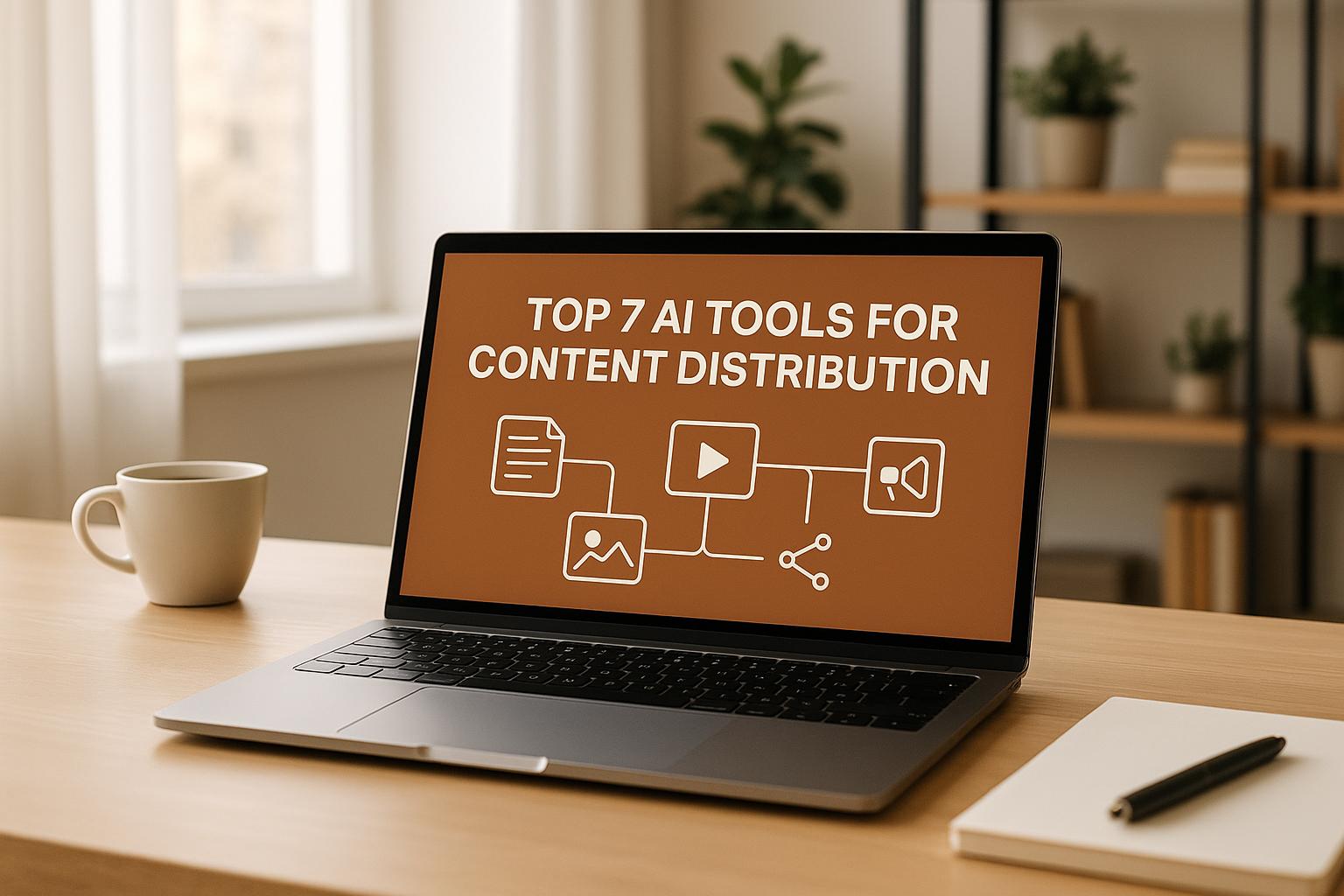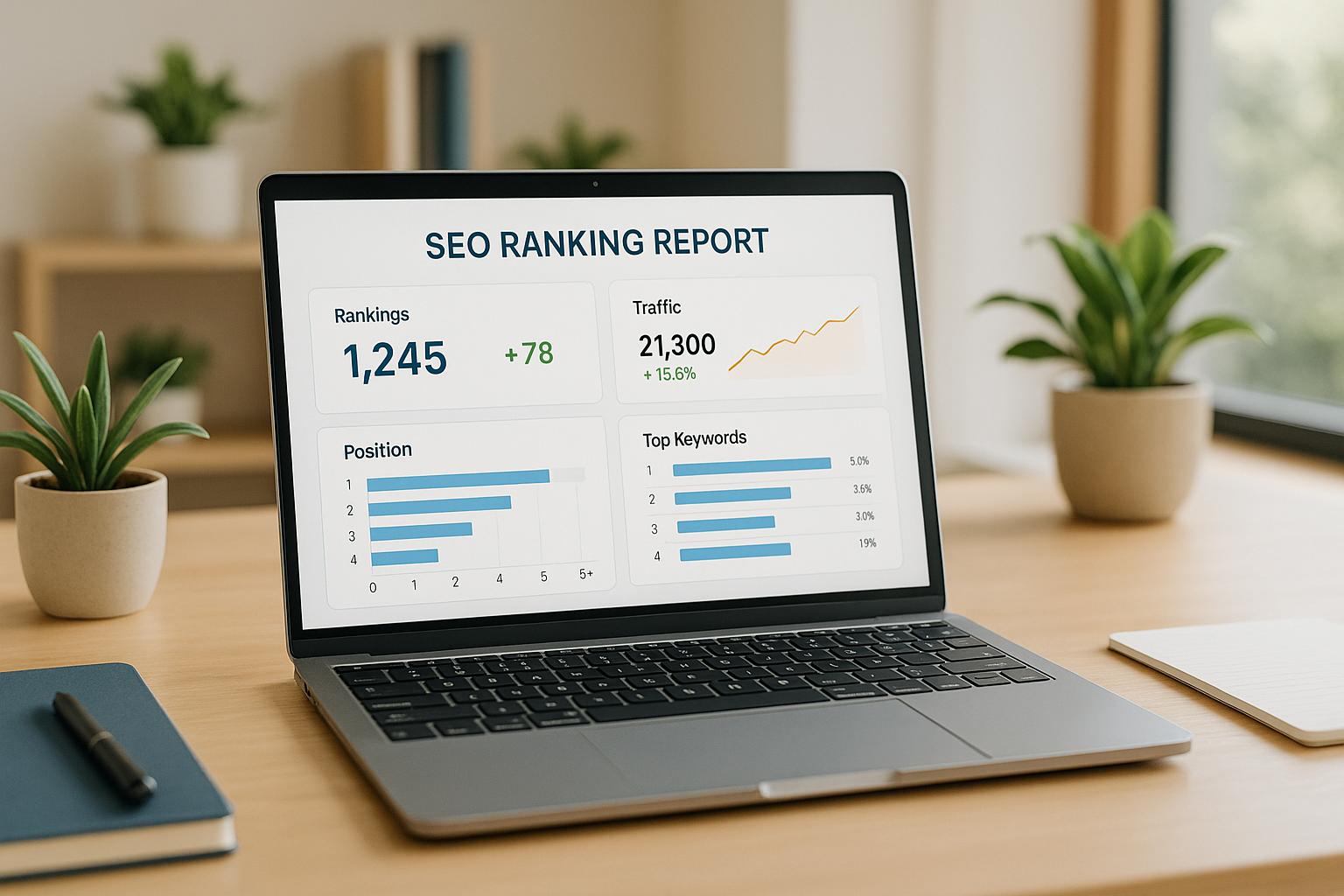Accessibility compliance is now a must for SEO success. Search engines like Google favor websites that prioritize user experience, making accessibility a key factor for higher rankings. At the same time, legal risks are increasing, with over 4,500 digital accessibility lawsuits filed in the U.S. in 2024.
Here’s what you need to know:
- Key Laws: The ADA now applies to websites, with WCAG serving as the technical standard.
- SEO Impact: WCAG-compliant sites see 23% more organic traffic and rank for 27% more keywords.
- Legal Risks: Non-compliance can lead to lawsuits, fines, and lost traffic.
- Practical Steps: Use semantic HTML, alt text, proper headings, and test keyboard navigation.
- Tools & Experts: Automated tools like WAVE and manual audits help ensure compliance.
Accessibility isn’t just about avoiding lawsuits - it boosts search visibility, improves user engagement, and reaches a wider audience.
The Truth Behind SEO and Digital ADA Compliance
Key Accessibility Laws and Standards in the U.S.
Navigating the legal framework of accessibility is essential for businesses aiming to comply with regulations while optimizing their SEO efforts. In the United States, several laws and standards shape how websites should be designed and maintained.
Americans with Disabilities Act (ADA) Requirements for Websites
The Americans with Disabilities Act (ADA) forms the cornerstone of digital accessibility regulations in the U.S. It mandates that public accommodations, including websites, be accessible to individuals with disabilities.
However, the ADA doesn’t include specific technical standards for websites, creating a gray area for compliance. To address this, courts and settlements often reference the Web Content Accessibility Guidelines (WCAG) as the go-to framework. In 2024, enforcement ramped up, with 8,800 Title III complaints leading to hefty settlements. Beyond legal risks, non-compliant websites face SEO challenges, losing out on valuable organic traffic from users with disabilities - who make up over 15% of the global population.
To meet these expectations, it’s critical to understand the technical benchmarks set by WCAG.
Web Content Accessibility Guidelines (WCAG) Compliance Standards
The Web Content Accessibility Guidelines (WCAG) have become the leading technical standard for ensuring accessibility in the U.S. Created by the W3C, these guidelines fill the gaps left by the ADA, offering clear and actionable requirements. While WCAG 2.2 is the current standard used in legal cases, WCAG 3.0 is still in development.
The guidelines are built around four core principles: content must be perceivable, operable, understandable, and robust. This involves practical steps like adding text alternatives for images, enabling keyboard navigation, ensuring proper color contrast, and using semantic HTML. These measures not only improve user experience but also boost SEO - features like descriptive alt text and semantic headings help search engines and assistive technologies work more effectively. In fact, studies show that WCAG-compliant websites see a 23% boost in organic traffic and rank for 27% more keywords compared to non-compliant ones.
Recent Policy Updates and Digital Accessibility Requirements
Recent policy changes have further clarified the responsibilities of businesses regarding digital accessibility. The Department of Justice has explicitly stated that the ADA applies to websites, with WCAG serving as the standard for compliance. This has led to more consistent enforcement and increased accountability for businesses.
In 2024, over 4,500 digital accessibility lawsuits were filed under the ADA. Additionally, state laws like California's Unruh Act have expanded the scope of compliance for businesses operating in multiple states. As search engines and AI tools increasingly prioritize accessibility, it’s becoming a critical factor for SEO rankings. Non-compliant websites have reported a 20–30% drop in organic traffic.
For businesses looking to align with these requirements, resources like the Top SEO Marketing Directory can connect them with experts who specialize in both accessibility and SEO. These developments highlight that accessibility is not just a legal obligation - it’s also a powerful tool for improving search visibility and user engagement.
Common Problems When Combining Accessibility and SEO
Blending accessibility with SEO can be tricky, even though both are crucial for a successful online presence. Shockingly, over 70% of websites fail to meet current web accessibility standards, with industries like business, technology, and entertainment showing the lowest compliance rates. These challenges aren’t just technical - they also carry legal and SEO risks that can’t be ignored.
Technical Problems: Updating Older Websites
Older websites often create a maze of challenges when trying to align accessibility with SEO. Many legacy sites were built with outdated codebases that lack the semantic HTML structure needed for both search engines and assistive technologies to interpret content effectively. On top of that, older CMS platforms may not support essential features like proper heading hierarchies, keyboard navigation, or compatibility with screen readers. Retrofitting these capabilities can be both time-consuming and expensive.
There’s also the issue of images - thousands of them - often missing alt text or using incorrect descriptions. Navigation systems on older websites frequently require a complete overhaul to make them keyboard-friendly while maintaining SEO-friendly URLs.
For database-driven websites, the challenge grows even more complex. Dynamically generated content must meet both accessibility standards and SEO best practices, which can expose design limitations and strain project budgets and timelines.
Managing Design Requirements and Compliance Rules
Designing for accessibility while maintaining creativity is another big hurdle. Designers often have to juggle brand aesthetics with practical considerations like high contrast, clear layouts, and readable typography. Features like custom animations or unconventional navigation may look great but can create barriers for screen readers or keyboard users.
Typography is another sticking point. Unique fonts may help a brand stand out, but they’re not always easy to read for everyone. Ensuring text remains functional at higher zoom levels can also disrupt carefully planned layouts. The best way to address these issues is through early collaboration between designers and accessibility experts, ensuring compliance is built into the creative process from the start.
Legal and SEO Risks of Non-Compliance
Ignoring accessibility doesn’t just lead to technical headaches - it can have serious legal and SEO consequences. Accessibility lawsuits have risen by 7% in the past year alone, leading to costly settlements, remediation expenses, and potential damage to a company’s reputation.
From an SEO perspective, non-compliance can be equally damaging. AI-driven search tools are increasingly excluding inaccessible sites from featured results and summaries. This can result in significant drops in organic traffic, harming both search visibility and user engagement.
The takeaway? Addressing accessibility isn’t optional - it’s a necessity. Failing to act now can lead to escalating costs and reduced returns on your digital marketing efforts.
sbb-itb-5be333f
Solutions: Adding Accessibility to Your SEO Strategy
Now that we've pinpointed common accessibility challenges, let's dive into practical ways to integrate compliance into your SEO strategy. Addressing accessibility issues doesn't have to be complicated if you approach it the right way.
Best Practices for Accessibility in SEO
Start by using semantic HTML elements like <header>, <nav>, <main>, and <footer>. These tags make your content easier for both search engines and screen readers to interpret, improving your site's accessibility and SEO performance.
Alt text for images is another must-have. Descriptive alt text helps visually impaired users understand your content through screen readers, while also boosting your image search rankings. Be specific and relevant - avoid vague terms like "image" or "picture."
A well-structured heading hierarchy is crucial too. Use H1 for the main title, H2 for major sections, and H3 for subsections. This structure creates a clear outline for users relying on assistive technologies and helps search engines crawl your site more effectively.
Don't forget to test keyboard navigation. Ensure all interactive elements, like forms and buttons, are accessible using just the Tab key. This step is essential for users who can't rely on a mouse.
Lastly, prioritize mobile accessibility. With mobile-first indexing, your site must perform well on smaller screens. Text should remain legible, buttons should be easy to tap, and navigation must work seamlessly with assistive technologies on mobile devices.
Using Tools and Expert Services for Compliance
You don’t have to tackle accessibility alone. Automated tools like WAVE, Axe, and Lighthouse can quickly scan your site to flag common issues. These tools are ideal for routine checks and offer a cost-effective way to monitor your site's accessibility.
However, automation has its limits. These tools may miss context-specific problems or flag false positives. This is where manual audits by accessibility experts come in. Experts can provide a deeper, more accurate analysis that automated tools simply can’t match.
If you're looking for a streamlined solution, the Top SEO Marketing Directory is a great resource. It features a curated list of tools and services that specialize in both SEO and accessibility. These vetted agencies can help you find tailored solutions that align with your needs and budget.
The best approach? Combine both methods. Use automated tools for quick, regular scans and schedule manual audits for a more thorough review. This hybrid strategy ensures your site remains accessible and compliant without overlooking critical details.
Comparing Different Accessibility Solutions
The right approach depends on your site's complexity, your budget, and your available resources. Here's a quick comparison of the main options:
| Solution Type | Pros | Cons |
|---|---|---|
| Automated Tools | Fast, scalable, and budget-friendly | May miss nuanced issues; false positives |
| Manual Audits | In-depth, context-aware, expert-driven | Time-intensive and costly |
| In-House Compliance | Full control, tailored to your needs | Requires training and significant effort |
| Outsourced Services | Specialized expertise, up-to-date standards | Ongoing costs, less direct control |
Automated tools are great for spotting obvious issues and keeping costs down, making them ideal for regular checks. However, they can overlook more subtle, context-specific problems.
Manual audits provide the most comprehensive analysis. Accessibility experts can identify issues that automated tools might miss and offer feedback based on real-world user experiences. The trade-off? They tend to be more expensive and time-consuming.
When deciding between in-house and outsourced efforts, consider your team's resources. In-house efforts give you more control and allow for continuous updates, but they require significant training and investment. Outsourcing, on the other hand, provides immediate access to expertise and ensures compliance with current standards, though it often comes with higher ongoing costs.
For many businesses, a hybrid approach works best. Use automated tools for routine monitoring, schedule manual audits for deeper insights, and balance in-house efforts with outsourced expertise to address complex challenges. This blended strategy helps you stay efficient while managing costs effectively.
Business Benefits of Accessibility Compliance
Making your website accessible isn’t just about following regulations - it’s a smart strategy that delivers measurable business advantages. By prioritizing accessibility, you can boost your site’s search engine performance, expand your audience, and reduce the risk of legal challenges.
Better SEO Performance and User Engagement
Accessible websites don’t just comply with guidelines - they perform better in search engines. A 2025 study analyzing 10,000 websites found that sites meeting accessibility standards experienced a 23% increase in organic traffic, ranked for 27% more organic keywords, and achieved a 19% higher Authority Score compared to non-compliant sites. This creates a ripple effect: higher rankings attract more traffic and backlinks, further strengthening your site’s online presence.
Accessibility features like semantic HTML, descriptive alt text, proper color contrast, and keyboard navigation also improve user experience. These elements lead to longer visit durations, lower bounce rates, and higher conversion rates - factors that directly influence search rankings.
Reaching More Audiences and Reducing Legal Risk
Accessibility opens the door to a massive, often underserved audience. Globally, over a billion people live with disabilities, representing a significant market actively seeking products and services online. Accessible features also help users with temporary limitations, like someone using a phone in bright sunlight or navigating with one hand.
On the legal side, accessibility compliance can protect your business from costly lawsuits. In 2024, more than 4,500 digital accessibility lawsuits were filed in the U.S., primarily under the Americans with Disabilities Act (ADA). This number is expected to grow by nearly 20% in 2025. Proactively addressing accessibility reduces the risk of litigation while also building an inclusive brand image - qualities that foster customer trust and loyalty.
How Accessibility Aligns with Search Engine Algorithms
Google increasingly rewards websites that prioritize user experience, mobile-friendliness, and content clarity - principles that align closely with accessibility. Features like adequate touch target sizes and readable text without zooming contribute to improved mobile SEO performance.
Accessible websites also use semantic code and clear structures, making it easier for search engines to crawl and index their pages. As Google’s AI-driven algorithms continue to evaluate factors like accessibility, mobile performance, and code quality, ignoring accessibility could put your site at a disadvantage.
Brands that embrace accessibility are seen as inclusive and ethical, which enhances customer trust and strengthens brand reputation. With more than 70% of websites still failing to meet current accessibility guidelines, prioritizing accessibility not only improves site performance but also positions your business for long-term SEO success.
Conclusion: Making Accessibility a Priority for Better SEO and Business Growth
Blending accessibility with SEO isn't just about meeting legal requirements - it's a smart move for business growth. Accessible websites consistently outperform non-compliant competitors in key performance areas, as the data clearly shows.
The urgency isn't just about better performance; it's also about staying on the right side of the law. In 2024 alone, over 4,500 digital accessibility lawsuits were filed in the U.S., and enforcement is expected to rise by 20% in 2025. High-profile cases, like those involving Domino's Pizza and Blick Art Materials, serve as cautionary tales for businesses that overlook accessibility.
But this isn't just about avoiding lawsuits. People with disabilities represent a huge, underserved market. Accessible design benefits everyone by improving usability, which leads to higher conversion rates and stronger customer loyalty.
Search engines are also evolving. With AI-driven algorithms increasingly factoring accessibility into rankings, businesses that focus on compliance today are setting themselves up for future success. Using specialized tools and services, like those found in the Top SEO Marketing Directory, can make this process more efficient and effective.
FAQs
How do laws like the ADA and WCAG affect a website's SEO strategy?
Accessibility laws like the Americans with Disabilities Act (ADA) and the Web Content Accessibility Guidelines (WCAG) have a big impact on how SEO strategies are crafted. Making sure your website is accessible to everyone not only helps you stay compliant with legal standards but also enhances the overall user experience - a key factor search engines consider.
Simple steps like adding proper alt text to images, creating clear navigation, and ensuring content is easy to read benefit all users, including search engine bots. When accessibility and SEO work hand in hand, the result can be higher rankings, more traffic, and a website that welcomes everyone.
How can businesses make their websites both accessible and SEO-friendly?
Creating a website that's both accessible and optimized for SEO isn't as complicated as it might seem. By paying attention to a few key areas, you can ensure your site is inclusive and search-friendly.
- Add descriptive alt text to images: This not only helps visually impaired users understand your content but also gives search engines more context about your page.
- Use a logical heading structure: Organize your content with clear, hierarchical headings (H1, H2, etc.). This makes it easier for screen readers to navigate and helps search engines grasp the structure of your content.
- Include captions or transcripts for multimedia: Whether it's a video or an audio file, providing captions or transcripts makes your content more accessible while also offering opportunities to include relevant keywords.
- Optimize for mobile devices: A responsive design ensures your site works well on any device, improving accessibility and boosting your SEO performance.
- Simplify site navigation: Clear menus and descriptive links make it easier for users and search engines to understand your site's layout.
By implementing these practices, you can create a website that’s welcoming to all users while also climbing higher in search engine rankings.
Why should businesses focus on accessibility compliance as part of their SEO strategy?
Creating an accessible website isn’t just about ticking off legal boxes - it’s about making the online experience better for everyone. When a site is easy to navigate, users are more likely to stay engaged and less likely to leave quickly. This, in turn, can boost your SEO performance.
Search engines are placing more emphasis on accessibility features like clear heading structures, descriptive alt text for images, and intuitive navigation. By incorporating these elements, you not only improve your site's visibility but also open the door to a wider audience, including those with disabilities.


